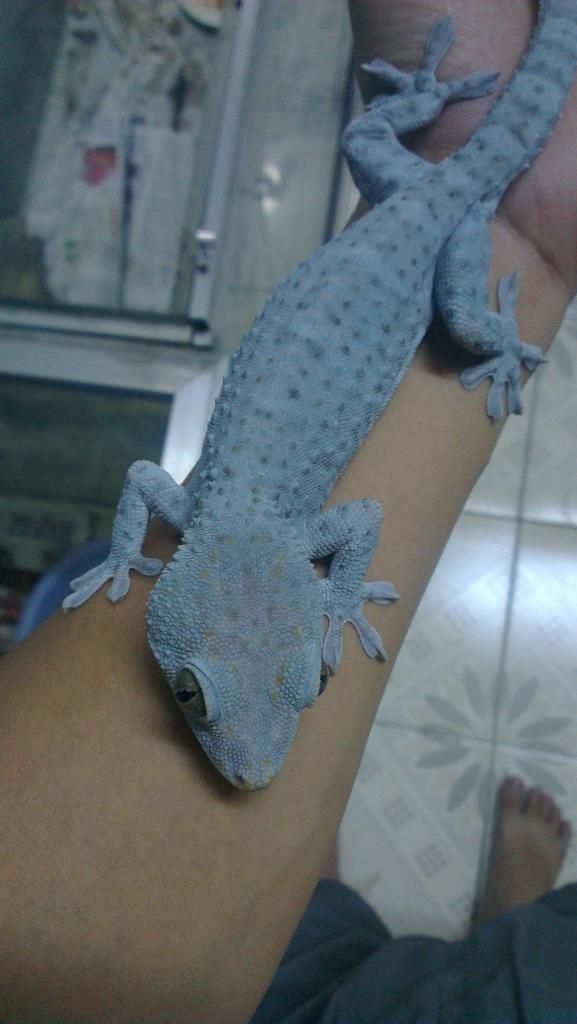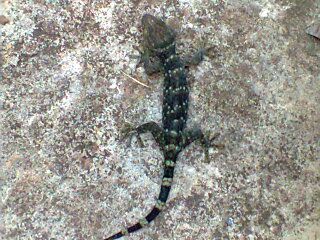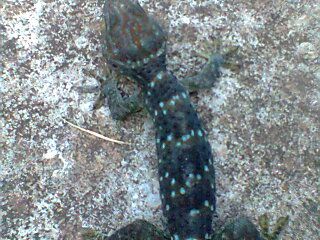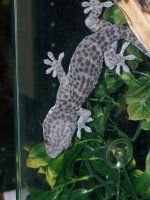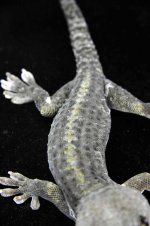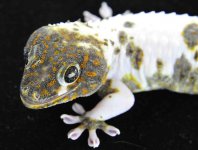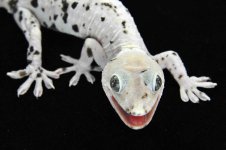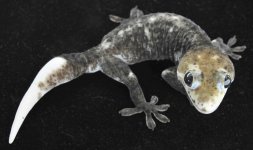I would call the darker one a Patternless Olive only if it stays dark all the time. This one is more likely a stressed, but very nice Patternless Green based on the yellow around the feet. It's probably male as well based on the coloring shown here.
The lighter one is not quite completely patternless but a very nice aberrant or 'fancy' non the less. "She" will add the light blue dots to the mix. Their offspring should mostly be green with blue dots. She also has orange or yellow spots that appear dark green. These may, or may not show up in the offspring as well.
My guess is that these aberrant are possible het for patternless green and may throw some patternless offspring as well. You may also get 'patternless' offspring that show some blue dots when they are fired up.
The 'male' patternless as a fully acclimated import would fetch $300 to $500 dollars, and the 'female' aberrant as a fully acclimated import would go between $125 and $250.
Assuming the aberrant is a female, try to get a truly patternless one for your next Tokay. Then all her offspring with that male will be patternless.
Enjoy.
Michael's Tokay Hoard @ www.billewicz.com
Pretty much what I said when he asked on a UK forum!


